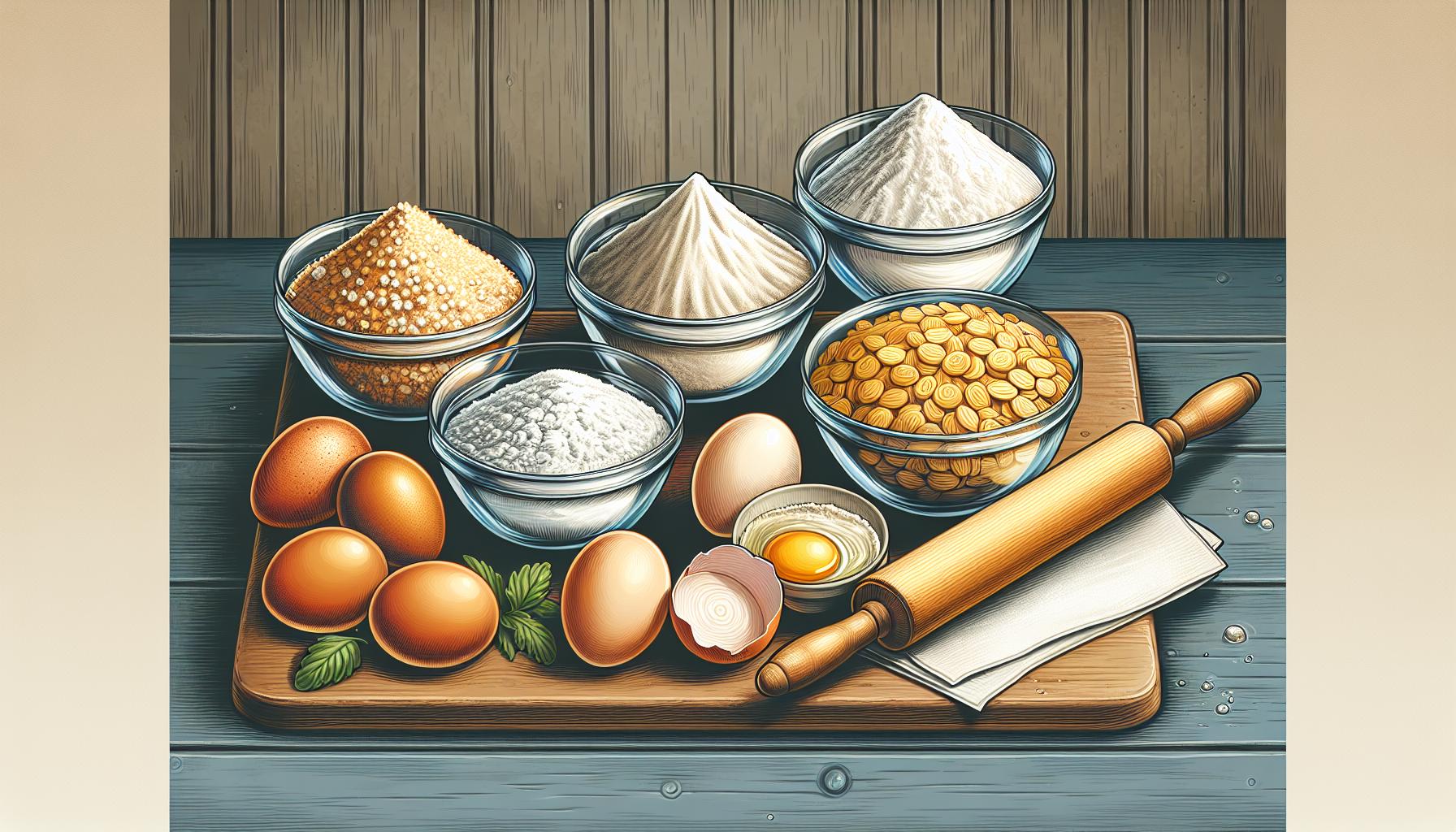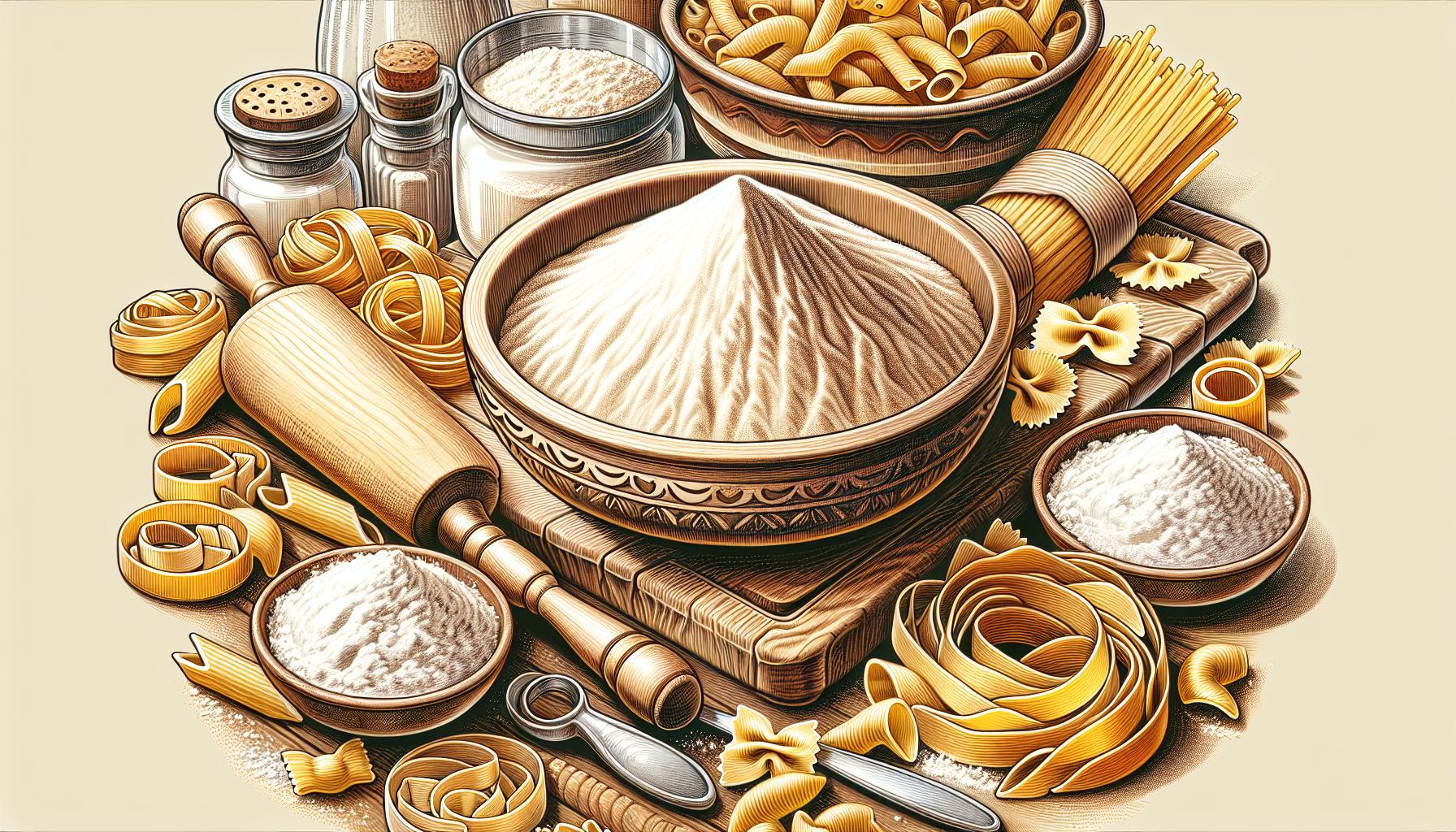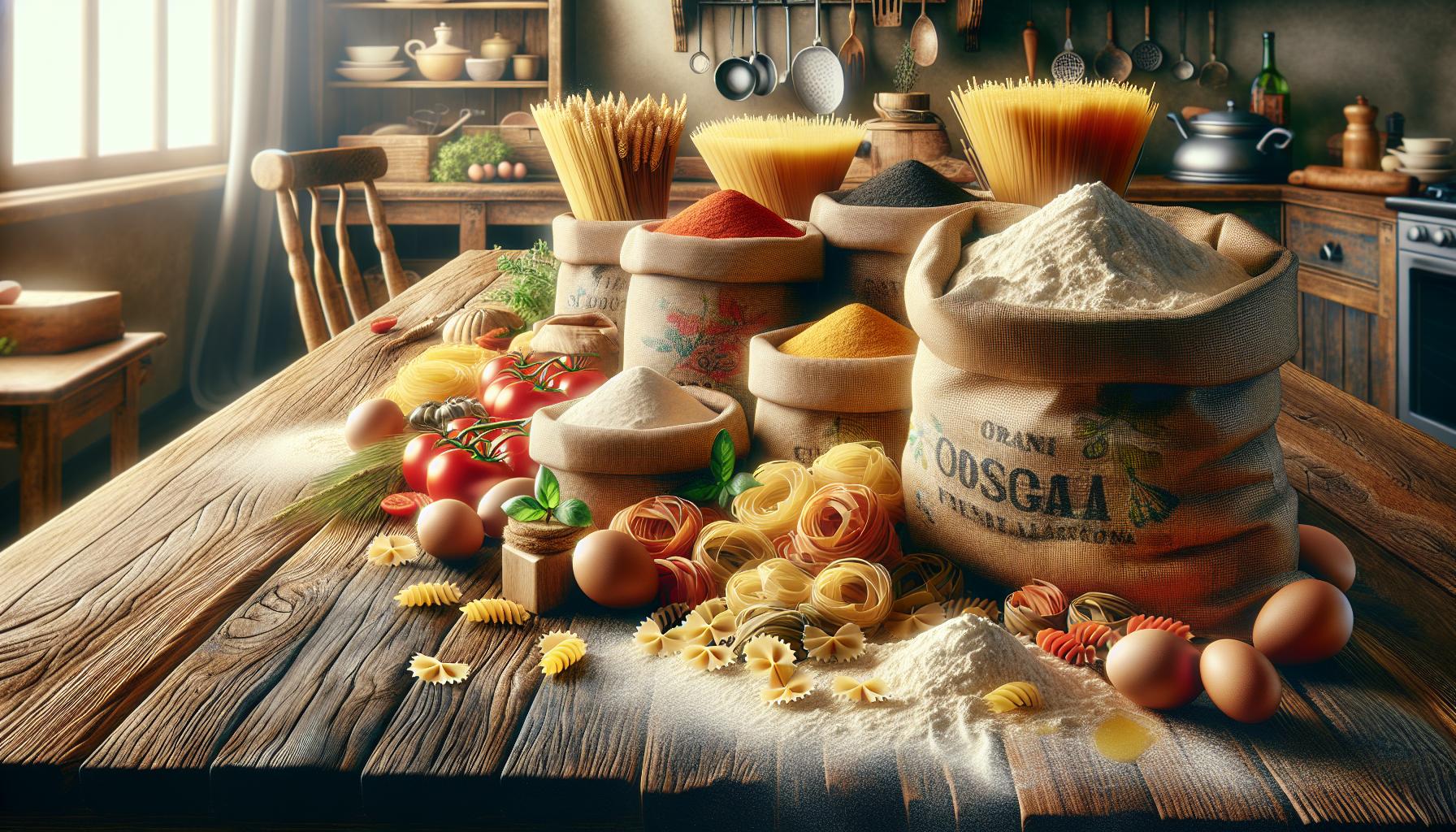Making homemade pasta is an art, and like any masterpiece, it starts with the right foundation. Choosing the perfect flour can make all the difference between silky, tender noodles and a dough that just won’t cooperate. If you’ve ever wondered which flour is best for pasta, you’re not alone—it’s a question many home cooks face.
From traditional Italian flours to everyday pantry staples, the type of flour you use shapes the texture, flavor, and overall quality of your pasta. Whether you’re rolling out tagliatelle or crafting delicate ravioli, understanding your options is the first step to pasta perfection. Let me guide you through the choices so you can create pasta that’s as authentic as it is delicious.
Understanding Pasta Flour
Choosing the right flour is critical when making high-quality homemade pasta. Each type impacts the pasta’s texture, flavor, and overall performance.
What „Welches Mehl Für Pasta“ Means
The phrase „welches Mehl für Pasta“ translates to „which flour for pasta“ in English. It reflects the importance of selecting the ideal flour to achieve authentic, traditional pasta. This question often arises due to the variety of flours available, such as semolina, all-purpose, or ’00‘ flour, each offering unique characteristics and outcomes.
The Role Of Flour In Pasta Making
Flour determines the structure and elasticity of pasta dough. High-protein flours like durum wheat semolina create firmer dough and a chewier texture, ideal for pasta shapes like penne or spaghetti. Finely milled ’00‘ flour, with its low protein content and soft texture, works best for delicate pasta like ravioli or fettuccine. Flour choice is influenced by the pasta’s intended style and cooking method. Proper selection enhances the cooking process and the dish’s final taste.
Types Of Flour For Pasta

Selecting the appropriate flour determines texture, elasticity, and flavor in pasta-making. Key flour types include all-purpose, semolina, and ’00‘, with alternatives available for specific dietary needs.
All-Purpose Flour
All-purpose flour provides versatility for various pasta recipes. It contains around 10-12% protein, which yields moderate gluten strength. While it’s not traditional, it works well for softer pasta types like fettuccine or spaghetti. Its texture produces less elasticity compared to semolina or ’00‘ flour.
Semolina Flour
Semolina flour, made from durum wheat, is a classic choice for pasta. With 12-15% protein, it generates strong, firm dough ideal for shaping pasta like penne or rigatoni. This coarser flour gives pasta a toothsome texture and ensures it holds its shape during cooking.
00 Flour
’00‘ flour is finely milled Italian wheat flour prized for delicate pasta styles. Its lower gluten content, around 8-12%, ensures smooth, pliable dough perfect for ravioli or tagliatelle. The powder-like consistency provides an incredibly silky texture unlike coarser flour varieties.
Alternative Flours For Special Diets
Alternative flours cater to dietary preferences or restrictions. Gluten-free options include chickpea or rice flour, producing softer pasta. Whole wheat flour offers higher fiber, creating denser, healthier pasta for tagliatelle or lasagna sheets. Almond flour is low-carb, though it’s best suited for specific pasta recipes due to limited elasticity.
Choosing The Right Flour

Selecting the proper flour is essential for crafting perfect pasta. Each flour type contributes unique properties that impact texture, elasticity, and cooking outcomes.
Traditional Pasta Recipes
Traditional pasta recipes rely heavily on classic flours like semolina and ’00‘ flour. Semolina, made from durum wheat, creates firm and chewy pasta, ideal for robust shapes like penne or rigatoni. ’00‘ flour, milled to fine perfection, ensures smooth, tender dough, perfect for delicate styles like fettuccine or tortellini. These flours have been staples in Italian cuisine due to their superior performance and authentic results.
Matching Flours To Pasta Types
Different pasta shapes and textures work best with specific flours. Long, thin noodles including spaghetti or linguine achieve elasticity and smooth texture when using ’00‘ flour. Semolina is better suited for short, ridged shapes like fusilli, maintaining their form during cooking. For whole-grain pasta, whole wheat flour offers strong flavor and added nutrients, while gluten-free flours like rice flour are optimal for special diets although they require additional binding agents like xanthan gum.
Tips For Mixing And Experimenting
Combine flours to explore new textures and flavors. For example, blending semolina with ’00‘ flour could offer enhanced elasticity and ease of handling. Hydrate dough by gradually adding water, keeping its consistency uniform. Avoid over-kneading gluten-free flour blends as they lack the elasticity of wheat-based options. Experimenting with ratios and mixing techniques helps refine your recipes and achieve your desired outcome.
Where To Find Quality Pasta Flour

Locating quality pasta flour is essential for creating authentic homemade dishes. Exploring local stores and online retailers helps ensure access to the best options for various pasta recipes.
Local Stores Vs. Online Options
Local stores often carry general-purpose flours and specialty options like semolina or ’00‘ flour in the baking aisle. Specialty grocery stores and Italian markets are particularly reliable for premium pasta flours. If unavailable locally, online retailers provide a broader range, including niche and imported brands. Websites like Amazon and specialty shops like Eataly offer easy access to high-quality options. Bulk purchases online often lower costs for frequent pasta makers.
Selecting Organic Or Specialty Brands
Organic flours are free from additives, offering a cleaner, natural taste. Specialty brands like Caputo for ’00‘ flour or Bob’s Red Mill for semolina are well-regarded for pasta making. Labels indicating the protein content help choose flours that suit specific pasta types. Certified organic versions are often available both in stores and online, combining quality with sustainability.
Conclusion
Choosing the right flour is the foundation of crafting exceptional homemade pasta. Each type of flour brings its own unique qualities, allowing you to tailor your pasta to your taste and desired texture. Whether you prefer the firm bite of semolina, the delicate smoothness of ’00‘ flour, or the versatility of all-purpose flour, the options are endless.
Experimenting with different flours or blends not only enhances your pasta-making skills but also opens the door to endless culinary creativity. With the right ingredients and a little practice, you can elevate your dishes and enjoy the authentic flavors of homemade pasta every time.
Frequently Asked Questions
What is the best flour for making homemade pasta?
The best flour for homemade pasta depends on the type of pasta you’re making. ’00‘ flour is ideal for delicate pasta like tagliatelle, while semolina flour works best for firmer, chewier pasta like penne or rigatoni. Mixing both can offer a balance of texture and flavor.
Can I use all-purpose flour for pasta?
Yes, all-purpose flour can be used for pasta, but it’s less elastic than ’00‘ or semolina flour. It’s a good option if you’re looking for versatility, especially for beginners, but it may not yield the authentic texture of traditional pasta.
Why is ’00‘ flour preferred for pasta dough?
’00‘ flour is finely milled, making it smooth and pliable, which is perfect for delicate pasta varieties like ravioli or fettuccine. It creates soft dough that’s easy to roll thinly without tearing, ideal for creating silky, tender pasta.
What is semolina flour, and why is it used for pasta?
Semolina flour is made from durum wheat and has a high protein content, giving pasta a strong, firm structure. It’s commonly used for pasta shapes like penne or fusilli as it holds its shape well and provides a slightly chewy texture.
Are there gluten-free flour options for making pasta?
Yes, gluten-free options like chickpea flour, almond flour, or rice flour can be used for pasta. These flours require adjustments in hydration and binding, such as using xanthan gum or starch, for proper dough formation.
Can I mix different flours for pasta dough?
Absolutely! Mixing flours like ’00‘ and semolina can create unique dough textures. For example, combining ’00‘ flour for smooth elasticity with semolina for firmness results in pasta that’s both tender and holds its shape well when cooked.
Is whole wheat flour suitable for pasta-making?
Yes, whole wheat flour adds higher fiber content and a robust, nutty flavor to pasta. However, it can result in a denser texture, so mixing it with all-purpose or ’00‘ flour can improve the dough’s pliability and taste.
Where can I buy high-quality pasta flour?
You can find quality pasta flour at specialty Italian markets, organic grocery stores, or online retailers like Amazon and Eataly. Look for flours labeled „durum,“ „semolina,“ or „00“ with high protein content for the best results.
What is the difference between ’00‘ flour and semolina flour?
’00‘ flour is finely milled and soft, best for delicate pasta varieties like spaghetti or ravioli. Semolina flour, on the other hand, is coarser and high in protein, making it ideal for firm pasta shapes like penne or gnocchi.
How does flour choice affect pasta texture?
Flour choice directly impacts pasta texture. High-protein flours like semolina create firm, chewy pasta, while softer flours like ’00‘ result in tender, smooth pasta. The right flour ensures the dough has the right elasticity and bite for your desired pasta type.

